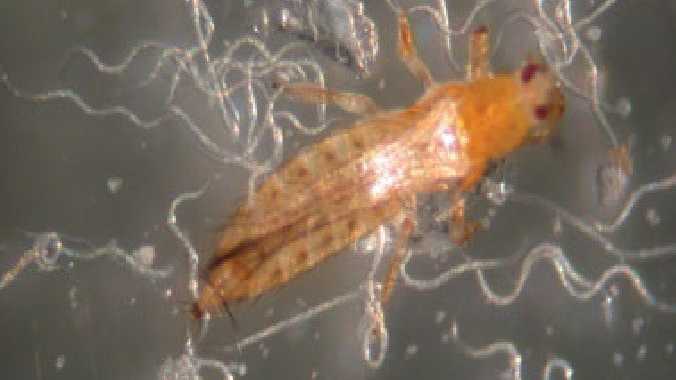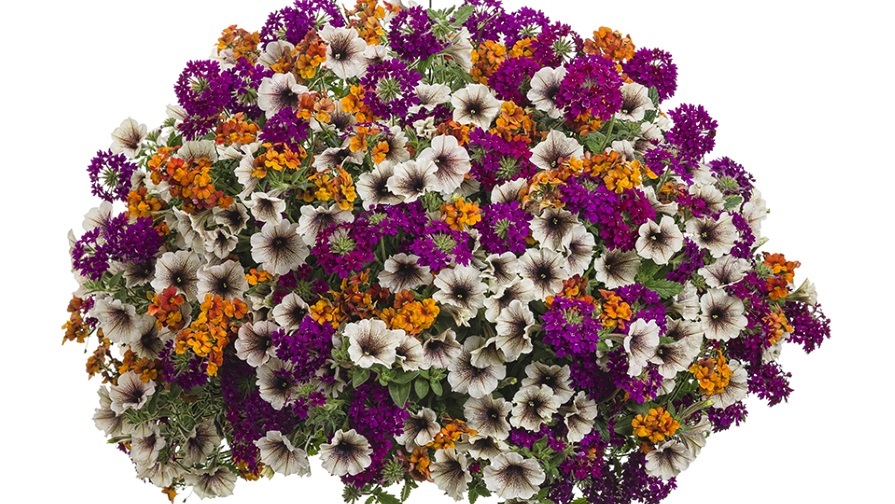The Pros and Cons of Nematodes in Ornamentals

Steinernema feltiae nematodes and thrips (Photo credit: Evergreen Growers Supply LLC)
A team of researchers at Michigan State University (MSU) is analyzing the use of nematodes for pest management in greenhouses. While some species of nematodes are an asset in reducing pest populations in greenhouse production, other species can cause plant stunting, reduced yields, and marketability.
Nematodes are microscopic round worms that are extremely common in soils. There are more than 25,000 species of nematodes, most of which are considered to be beneficial and feed on bacteria, fungi, or insect larvae. The beneficial characteristics of one species of nematode, Steinernema feltiae, are even exploited in some commercial greenhouses in order to reduce pest populations.
S. feltiae are entomopathogenic on Western flower thrips larvae and fungus gnat larvae, which are two major greenhouse pests. Applying S. feltiae as a soil drench in the greenhouse reduces the populations of Western flower thrips and fungus gnats in greenhouse crops.
However, there are some nematodes that can also be considered harmful to ornamental crops, such as the northern root knot nematode, Meloidogyne hapla.
Northern root knot nematodes are herbivorous, parasitic nematodes that are a pest problem in outdoor crop production in the northern U.S. They are able to overwinter despite harsh winter conditions. Northern root knot nematodes are a major pest of numerous vegetables such as carrots, celery, parsnips, etc., and perennial ornamentals such as daylilies and hostas. In fact, growers are still routinely losing 20% of their crop to northern root knot nematodes.
The life cycle of northern root knot nematodes is approximately one month long, therefore multiple generations per growing season should be anticipated. There are a few common methods of suppression including fumigation, crop rotation with non-hosts (monocots or grasses), hot water dips of transplants prior to planting, and nematicides. However, even the industry standard hot water dip in order to reduce northern root knot nematodes in the transplants causes tip burn on the leaves of the daylilies.
Check out the complete MSU article here.









